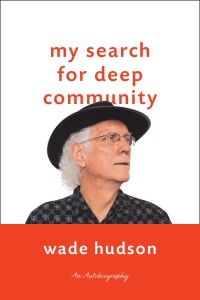If the Soul Dialog proves rewarding, the two of you decide on a third person to invite to participate in a Soul Club, with the intent of eventually inviting more people to join. Open the Soul Club meeting with two or three minutes of silence, allowing participants to pray, meditate, or reflect in their own way. Then respond to the same questions posed in Step Six. Merely reporting briefly and being listened to carefully can be powerful. Consider agreeing that problem-solving will be deferred until later, and that individuals will work on problems with others they select depending on the issue. Emotional security can also be enhanced by avoiding oppressive peer pressure and by trusting group members to define their own goals for their own self-development. Such agreements can help ensure that emotional sharing takes place safely. Without that assurance, few of us are willing to risk disclosing our deepest feelings. Following the reports, club members make plans for future meetings, which may include additional activities that involve some or all of the members. Keep in mind that members of the Soul Club may or may not belong to the same organization, so expand the group carefully as with the Soul Session process outlined above in Step Four. Once a number of Soul Clubs are established, some members occasionally meet and interact with members from other clubs in regional and national gatherings.
All posts by wadehudson
Step Seven: Soul Dialogs.
If the interaction in Step Six proves rewarding, set aside time for both of you to exchange responses to those questions again after reflecting on the questions during the interim. At this “Soul Dialog,” share a meal, socialize informally, respond to both the personal and political questions in Step Six, and then proceed to do spontaneously whatever flows from your exchanges.
Step Six: Personal and political questions.
Once you’ve established the habit of asking questions and are confident about being a good listener, informally ask a close friend (perhaps your spouse or domestic partner), in so many words, “Have you been working on being a better person? If so, how?” and then follow the conversation wherever it takes you. Then ask, “Have you recently communicated with your Congressperson? If so, how?” and again go with the flow of the conversation that results.
Step Five: Music listening party.
Take turns playing a soulful CD with a friend. Listen to it without talking. Discuss it afterwards.
Step Four: Soul Sessions.
Invite a close friend with whom you have engaged in some or all of the steps above to decide on a third person to join the two of you in “speaking from the heart.” That’s it. No other agenda. The gatherings take place in a person’s home or at a community center. At the outset, agree on the time you will adjourn and open the floor to whoever wants to speak first. Future speakers first respond to the previous speaker. If they then want to lead the conversation in a new direction, they acknowledge that intent. Before adjourning, evaluate the session, consider inviting others, and decide together who will be invited, in order to ensure that everyone already involved with the group will be comfortable with the possible newcomers. If the group grows to include several or more individuals, consider using a “talking stick” with each speaker that allows following speakers to be recognized simply by passing the stick to them. That method makes it easier for less assertive individuals to have a voice, and the pause between speakers enables participants to better absorb what was said.
Step Three: Listening Dyads.
Meet with a friend, agree on how much time you will have together, and divide the time equally. Then, first one of you, and then the other, report on what has been happening in her or his life and what she or he has been thinking and feeling. Listeners interrupt only to ask a question to clarify something they did not understand. The person talking may use some of her or his time to ask for advice or information, or she or he may just report. Allow five minutes at the end of the exchanges to reflect on the experience and consider making plans for another.
Step Two: Twenty questions.
Take turns with a friend asking twenty questions, keeping in mind that the purpose for doing so is to get to know each other more fully. Answer the questions briefly, spontaneously, and honestly. Afterwards, take some time to reflect on the experience together.
Step One: Ask questions.
When you meet with friends, ask many questions, not just one or two polite ones. Be curious. Ask follow-up questions to deepen your understanding of how other people view themselves and the world. See what you can learn. Talk less and listen more. Watch screens less and connect with humans more. These simple questions work well: Why? Why not? How did you feel about that? What are you feeling? How might you achieve that goal? Can you tell me more? What’s been on your mind lately? It’s easy to ask those questions, so why not ask them and listen carefully to the answers? Improve your friendships by becoming a better listener.

